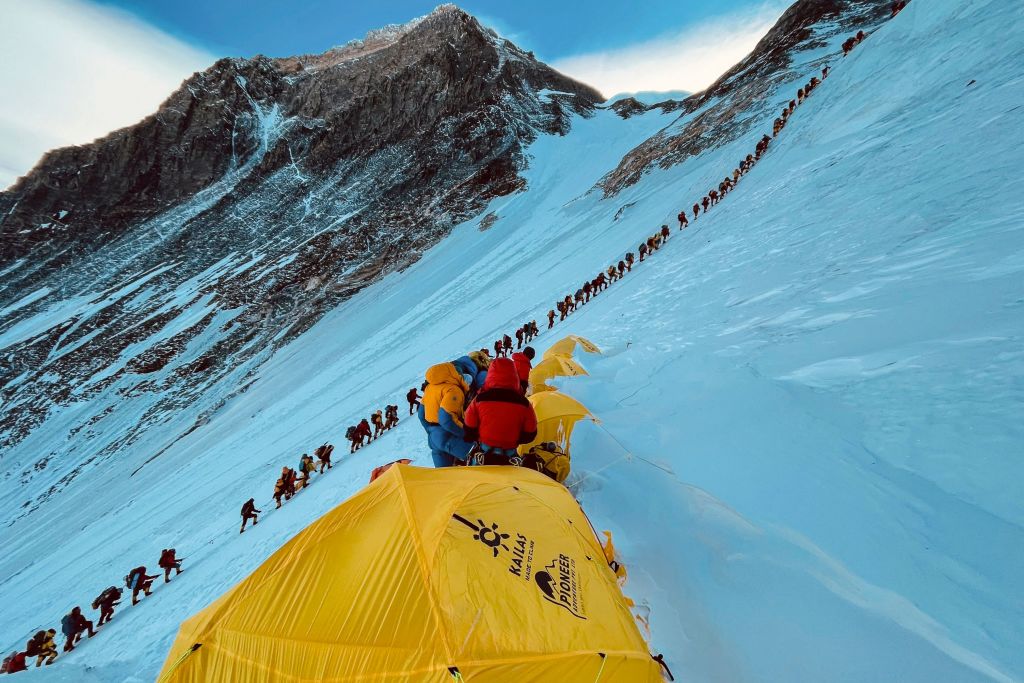
Mount Everest climbers must now rent and wear a tracking device on their journeys to cut down time on search and rescue missions.
Commenting on the news, Nepal’s Tourism Department director of mountaineering Rakesh Gurung tells TIME that a climber will pay around $10 for an electronic device the size of a thumb drive, provided by their expedition agency, which will be inserted inside their jacket, then returned after the climb. If anything goes wrong, the idea is that search and rescue missions can locate the missing climber with the help of the detector.
“The main objective of using this electronic chip is to make the search and rescue more effective and decrease the casualties on Mount Everest,” he explains.
Gurung says mountaineering companies will issue these devices in the spring climbing season, when conditions are best to take on the world’s tallest mountain. The season starts on March 1 and runs through May, but the tourism department will likely not start issuing permits until around March 15, Gurung says. Mountaineers must wait for the most favorable weather to summit the peak, with most ascents occurring around May 18, according to Outside magazine.
Mount Everest, always perilous to climb, has also become increasingly and dangerously crowded in recent years. Last year, Nepal issued 416 permits, some which included more than one climber, for a total of 478 climber permits, a record number, Gurung says. Those numbers don’t include the one or more Sherpas (local Nepali guides) climbers usually bring.
The season was also one of the deadliest in recent memory, per the BBC. A total of 19 people were reported dead or missing, according to documentation Gurung sent TIME.
In response to concerns regarding the high number of permits and casualties, Gurung tells TIME on Sunday that government agencies and mountaineering associations met five days earlier to discuss safety.
“I want to assure the whole world that the search and rescue operations and other safety measures will be strictly implemented in Mount Everest, and I would like to welcome more climbers in the season,” he explains.
Gurung says “the numbers will increase more than last year” because there have been many bookings and requests. When asked whether there would be any limit on permits, Gurung says that if there appears to be any kind of traffic jam in May, “we will think about stopping giving permits.”
Last year, Nepal’s Tourism Board announced that climbers on any mountain would be required to get a tracking information management system card from an authorized mountaineering agency in an effort to “ensure the safety and security of visitors” and discourage unlicensed treks.
Nepal also piloted tracking chips in the past. In 2017, the country’s tourism department provided some Everest climbers with trackers to prevent false summit claims and make rescues easier, Reuters reported. At the time, tourism officials said that if the concept worked, they would make it mandatory for all climbers.
More Must-Reads From TIME
- The 100 Most Influential People of 2024
- How Far Trump Would Go
- Scenes From Pro-Palestinian Encampments Across U.S. Universities
- Saving Seconds Is Better Than Hours
- Why Your Breakfast Should Start with a Vegetable
- 6 Compliments That Land Every Time
- Welcome to the Golden Age of Ryan Gosling
- Want Weekly Recs on What to Watch, Read, and More? Sign Up for Worth Your Time
Contact us at letters@time.com